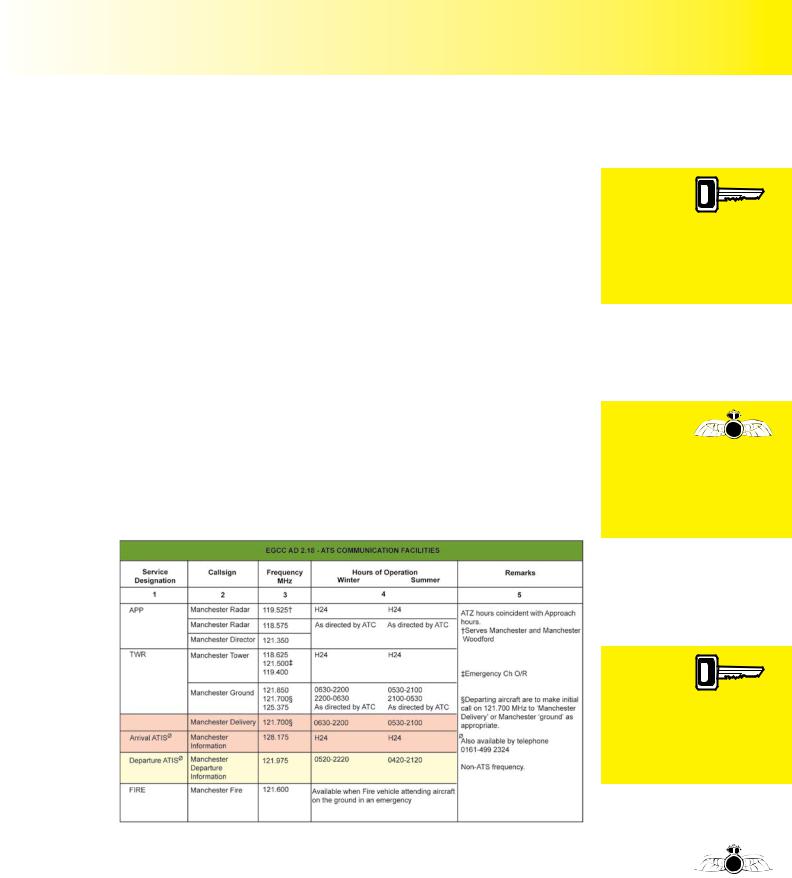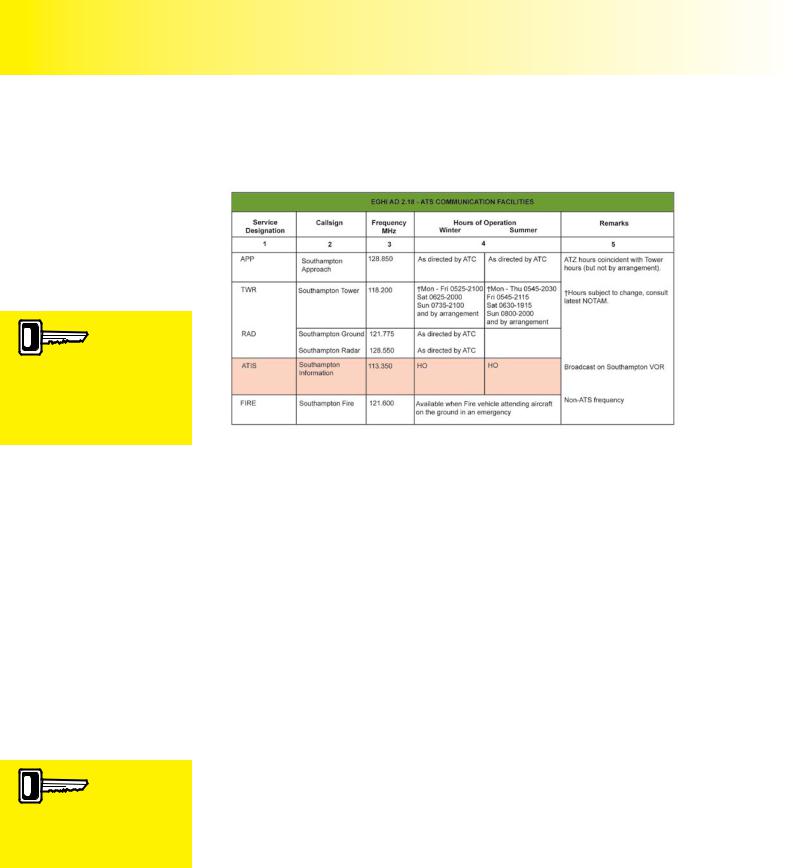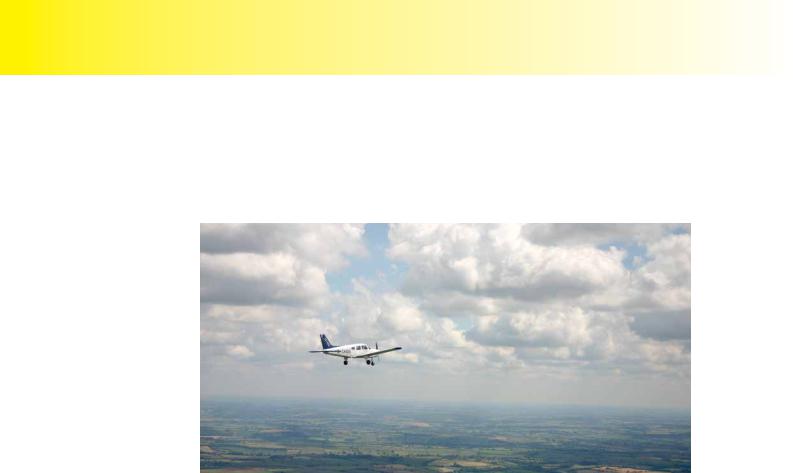
ppl_04_e2
.pdf
ID: 3658
Customer: Oleg Ostapenko E-mail: ostapenko2002@yahoo.com Customer: Oleg Ostapenko E-mail: ostapenko2002@yahoo.com
C H A P T ER 2 3 : T H E
THIS IS LONDON VOLMET MAIN
AMSTERDAM AT 1125.
WIND 160 DEGREES 16 KNOTS.
VARIABLE BETWEEN 130 AND 190 DEGREES. VISIBILITY 7 KILOMETRES.
LIGHT RAIN SHOWERS.
CLOUD FEW 2 THOUSAND FEET. FEW CUMULONIMBUS 2 THOUSAND 5 HUNDRED FEET.
BROKEN 4 THOUSAND FEET. TEMPERATURE 14. DEWPOINT 9 QNH 1004
BECOMING
VISIBILITY 10 KILOMETRES OR MORE. NIL SIGNIFICANT WEATHER.
BRUSSELS AT 1120
WIND 190 DEGREES 14 KNOTS MAXIMUM 24 KNOTS.
VISIBILITY 10 KILOMETRES OR MORE. LIGHT RAIN SHOWERS.
CLOUD SCATTERED 2 THOUSAND 3 HUNDRED FEET.
SCATTERED 5 THOUSAND FEET. BROKEN 10 THOUSAND FEET. TEMPERATURE13. DEWPOINT 10. QNH 1006.
NOSIG.
GLASGOW AT 1120.
WIND 070 DEGREES 5 KNOTS.
VARIABLE BETWEEN 030 AND 110 DEGREES. VISIBILITY 10 KILOMETRES OR MORE. CLOUD FEW 1 THOUSAND 8 HUNDRED FEET SCATTERED 4 THOUSAND 5 HUNDRED FEET. TEMPERATURE 14. DEWPOINT 8.
QNH 997.
DUBLIN AT 1130.
WIND 260 DEGREES 6 KNOTS.
VARIABLE BETWEEN 240 AND 300 DEGREES. VISIBILITY 10 KILOMETRES OR MORE. CLOUD SCATTERED 2 THOUSAND 4 HUNDRED FEET.
TEMPERATURE 13. DEWPOINT 6. QNH 997.
NOSIG.
The
information on VOLMET
broadcasts is
updated every 30 minutes.
LONDON/GATWICK AT 1120. WIND 190 DEGREES 10 KNOTS.
VARIABLE BETWEEN 150 AND 220 DEGREES. VISIBILITY 10 KILOMETRES OR MORE. SHOWERS IN VICINITY.
CLOUD FEW CUMULONIMBUS 2 THOUSAND 4 HUNDRED
SCATTERED 4 THOUSAND FEET.
TEMPERATURE 11. DEWPOINT 9. QNH 999.
LONDON/HEATHROW AT 1120.
WIND 220 DEGREES 12 KNOTS.
VARIABLE BETWEEN 190 AND 250 DEGREES. VISIBILITY 10 KILOMETRES OR MORE. LIGHT RAIN SHOWERS.
CLOUD FEW 2 THOUSAND FEET. BROKEN 11 THOUSAND FEET. TEMPERATURE 11. DEWPOINT 8. QNH 997.
TEMPO
VISIBILITY 4 THOUSAND 5 HUNDRED METRES.
RAIN SHOWERS.
Figure 23.2 Example VOLMET broadcasts from LONDON VOLMET MAIN.
287









